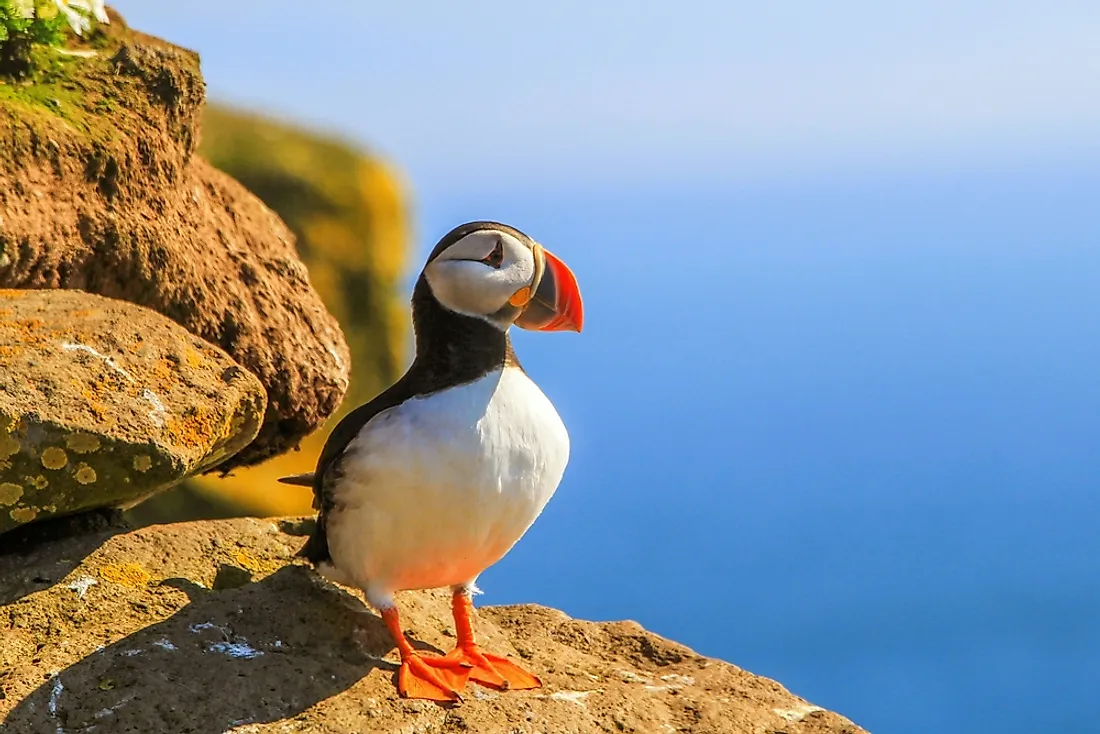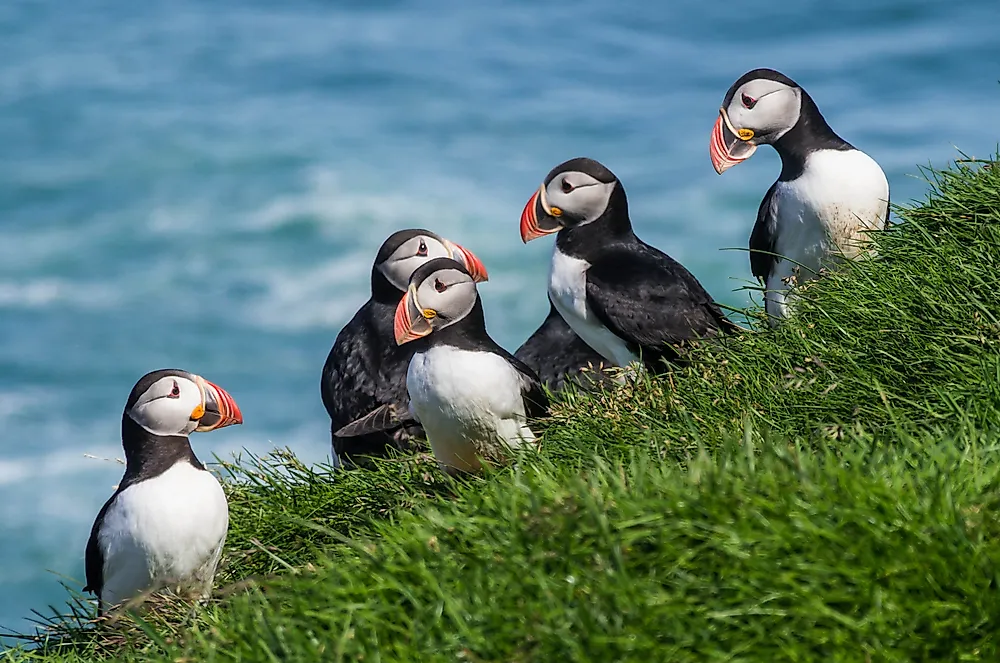Puffin Facts - Animals of the World

Puffins are birds classified in the family Alcidae and the Genus Fraterculini. Among the bird’s species are the Atlantic puffins who inhabit the Atlantic Ocean and the horned and tufted puffins who live in the North Pacific Ocean. The largest numbers of Atlantic puffins have been recorded in Iceland with a record number of 10 million birds.
4. Physical Description
The puffin is characterized as having brownish-grey or white underparts and black upperparts. The bird is stocky and has short wings and tails. Its feet appear orange-red while its face is white with a black-capped head. During the breeding period, the birds sport large and colorful bills. Once the breeding season is over, the colorful portion of the bill is shed leaving a smaller and duller bill in its place. Body size varies with the species. While the Atlantic puffin grows to be 11 to 12 inches, the tufted puffin has an average length of 14 inches, and the horned puffin is 8 inches in length. Puffins fly at 33 feet above the water and are silent at sea.
3. Diet
The puffin diet consists of fish and zooplankton. The Atlantic puffin mostly preys upon capelin, herring, sand eels, and sprats. Puffins supply small fish to their offspring several times a day. Puffins have the unique ability to carry several small fish in one trip using their bill. The beak has a distinct hinging mechanism which enables the lower and upper biting edges to link at any of several angles. Compared to other species who carry fish when foraging, puffins bring back more food at a time than any other species.
2. Habitat and Range

Puffins are seabirds who inhabit the water bodies where they feed. The Atlantic puffin has been sighted breeding in Newfoundland, Iceland, Greenland, Norway, and various smaller North Atlantic Islands. Its wide range stretches as far as the British Isles and Maine. During winter, the tufted puffin has the widest range of coverage from Japan to California. Breeding colonies of the tufted puffin are commonly observed in British Columbia, Alaska, Kuril and Aleutian Islands, Kamchatka, and throughout the Sea of Okhotsk.
1. Behavior
Puffins settle on islands and coasts for breeding purposes. The male and female horned puffin join in the construction of nests whereas the males of the Atlantic puffin species build the nests. Burrows created by the horned puffins are typically about 3.3 feet deep and end in a chamber. The tunnel leading to a burrow dug by a tufted puffin may reach a length of up to 9.0 feet. The Atlantic and tufted puffins dig their tunnels through the soft soil while the horned puffins prefer rock crevices on cliffs. Feather, leaves, and grass may be used by Atlantic puffins to line their burrows. The Atlantic puffin eggs appear creamy white although sometimes they can be tinged lilac. The female puffin lays one egg which both parents incubate. The incubating parent cradles the egg against its brood patch by the use of its wings. After spending their first few years living at sea, the chicks fledge at night. Puffins are able to breed when they reach five years old.











